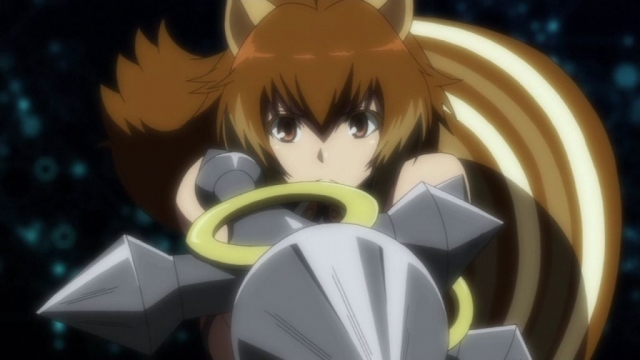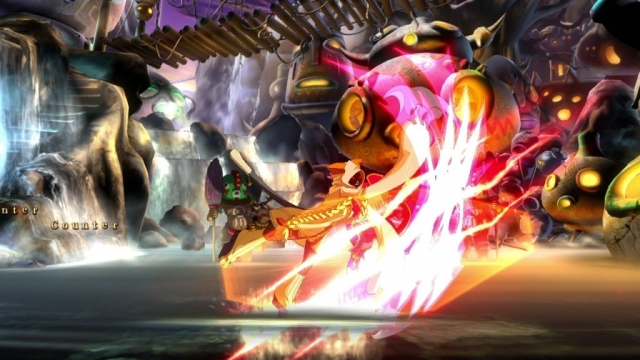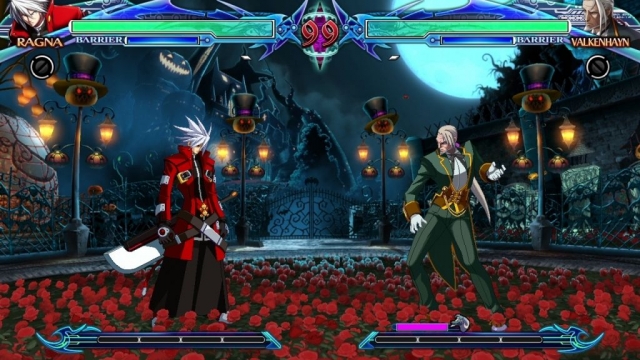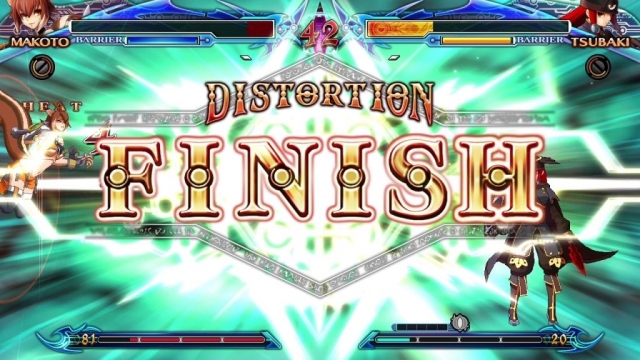BlazBlue: Chrono Phantasma
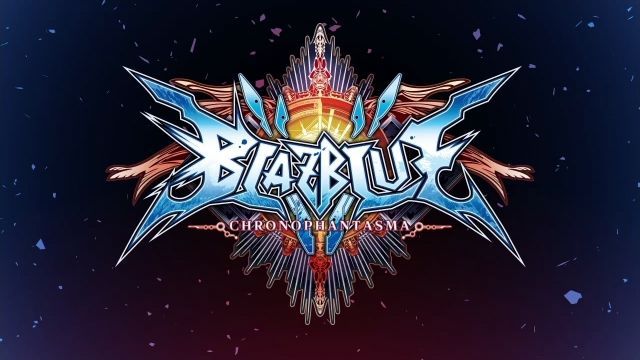
Since 2009, the BlazBlue franchise has carved a niche out for itself as the wacky high-end 2D fighter to beat with Arc System taking a break from Guilty Gear and focusing on this. The series retained Guilty Gear’s frantic weapons-heavy pace, but with a far more bizarre cast of characters. With AquaPazza being a recent release, I jumped at the chance to check out the latest entry in the BlazBlue saga – especially since I’ve enjoyed the series since its inception. Guilty Gear is always fun to play, and this essentially fine-tunes that franchise’s gameplay, and makes a lot of little tweaks to both the gameplay and the roster with each game.
The main thing that kept me hooked was the gameplay though, so I didn’t really pay much attention to the storyline. As a result, I enjoyed the storyline catch-up feature…until it started. Instead of just going through something like an anime cutscene recap or just throwing in a text recap, they went with a visual drama in episodic form with limited animation and a bunch of wacky dialogue. While it’s entertaining on its own, as a way to catch up on the convoluted storyline, it’s a nightmare. This kind of feature can be done well, as the Yakuza series has shown, but here, you’re better off just checking out a Wiki page to catch up on the details. There’s a story mode included that is far more involved than what you’d get in other fighters. It’s got full voice-acting and both motion comics as well as anime-style cinematics are used to tell the game’s stories.
You’ve got three different sets to go through, with each focusing on a different convoluted storyline with a whole bunch of characters and just a ton of stuff going on. Honestly, after going through it, the recaps, and using research, it’s impossible to keep track of while playing and it winds up just being tiring. Playing fighting games can be taxing on the hands, and that gets worse when you’ve got to press X a ton just to make steady progress. It had me wishing for a 360/Xbox One version so I could just tell the game to move things along. However, if you enjoyed this approach before, you’ll dig it here. As someone who just wants to spend time with stories that are fun and/or compelling, this didn’t do a thing for me. The characters themselves are amusing to look at, but the backstories are mind-boggling, and not due to depth – just due to the sheer amount of stuff in them. The story mode is about 90% fighting and 10% actual fighting, and that’s with having an arcade mode that features some story elements.
That mode is basically just like every arcade mode ever, but with just enough backstory in there to intrigue you. Here, the fighting shines and it’s a fine starting point for the game’s many other fighting modes. Players of the past games wondering what’s new will be glad to hear that five new characters have been added to the mix by default, with two more available as DLC. Overdrive mode has been added, and that allows you to dole out more damage for a short period of time by pressing all of the face buttons. This can be combined with super moves called distortion drives to do even more damage and have a greater attack range as well.
The overdrive period is short, uses half of your heat gauge, and takes some time to set up, so there’s a risk/reward to it. If you’re on a roll, it makes sense to take a chance on overdrive and get the job done faster, while being near the end of your life bar and activating it allows it to last for a longer period of time. If you come from behind at that point, the right timing could very well give you a win when it seemed impossible before – but you’ll want to make sure to do it only when you have an opening since you’ll be vulnerable to attack and a faster demise otherwise.
Beyond just regular online play in both ranked and unranked matches, there are a slew of additional game modes to spend your time in. There are three different kinds of training modes to play, and you’ll want to spend some time in each before playing online. They’re all about showing you how to do moves, and then teaching you how to make use of more than just moves, but the more advanced gameplay techniques, to thrive. If the long story mode isn’t to your liking, you can spend some time with the Abyss, Score Attack, or Unlimited Mars modes. Abyss mode is essentially a gauntlet where you’ve got waves of foes to fight one after the other. Damage carries over, but you gain XP to use to boost your stats, which can give you a greater chance of survival. Score attack is the same as it is in any other game, but doesn’t have damage carry over – so it’s better for less-seasoned players. Unlimited Mars is an expert-only mode, and will absolutely demolish anyone who doesn’t have blocking and fine-tuned technical fighting mastered. Like all of the BlazBlue games, the action is fast, but never too fast to follow. You’ve got the ability to dash pretty much anywhere, and depending on your character, attack from nearly every direction imaginable. If you loved past Guilty Gear and BlazBlue games, you’ll like this one.
Visually, this is the best-looking entry in the series so far. Given that it’s always been known for its visual prowess, that’s a good thing. The developers took the time to redraw all of the sprites, and it’s led to everyone looking a bit more detailed. Animations also seem a bit more fluid than before, and the lush backgrounds are full of life and stand out from one another – like they should for a high-end fighting game. The overall presentation is impressive. Menu layouts are nice, although the unranked online match menu can be a bit of a cluster to get through since it’s just a series of areas you need to walk to one by one to set up a fight. It’s a bore, and you’re better off going for a ranked battle anyway. Sure, you might have tougher competition, but you’ll always learn from a defeat and get better as a result.
There’s a lot going on with the audio. Much like the core gameplay, there aren’t many moments to breathe. Between the music and non-stop voice quips during battle, you’ll always have something to hear and the good thing is that it’s never overpowering. Hearing the same quips over and over can get old, but that’s usually just a sign of you needing to mix up your offense more than anything else. The over-the-top performances fit the insane character designs, and the overall “wacky anime” vibe the game’s going for. Musically, the soundtrack reminded me a lot of the Cowboy Bebop anime, with a wide spectrum of genres covered. You’ve got fast dance-style music and really somber stuff that would almost be at home in a western, or perhaps horror anime depending on the song. All of the music is enjoyable and had me wishing for an OST release down the line.
Other than the story mode simply not being to my liking whatsoever, or the same kind of button-mashing approach being taken to catch people up on it, I loved pretty much everything about BlazBlue: Chrono Phantasma. It brings a lot of the same exciting action the series has been known for since its inception, and adds some new wrinkles to the core mechanics to freshen it up alongside a redone roster. It’s got some awesome graphics and music, with some amusing voice acting and a comedy-heavy delivery for much of the drama. It may not be for everyone, but for those that enjoy that kind of thing, and enjoyed past games, you’ll get your money’s worth out of Chrono Phantasma.
Reviewed By: Jeremy Peeples
Publisher: Aksys Games
Rating: 80%
——————————————————————————–
This review is based on a digital copy of BlazBlue: Chrono Phantasm for the PlayStation 3 provided by Aksys Games.
 Game Over Online
Game Over Online